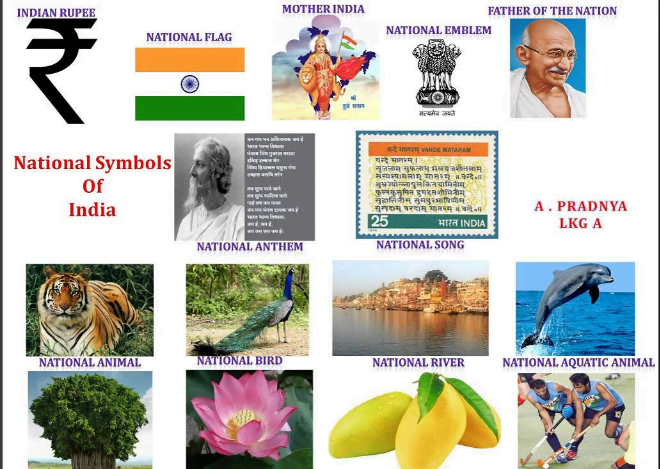Contents
- 1 National flag
- 2 National Anthem of India – Jana Gana Mana
- 3 National Song of India – Vande Mataram
- 4 National symbols of India (Tabular)
- 5 National Animal of India – Bengal Tiger
- 6 National Bird of India – Indian Peafoul
- 7 National Heritage Animal of India – Elephant
- 8 National Calendar of India – Saka calendar
- 9 National Currency of India – Indian Rupee
National flag

National flag
A horizontal rectangular tricolour with equally sized deep saffron at the top, white in the middle and India green at the bottom. In the centre is a navy blue wheel with twenty-four spokes, known as the Ashoka Chakra. The flag is based on the Swaraj flag designed by Pingali Venkayya.
National Anthem of India – Jana Gana Mana
| Title | Jana Gana Mana |
| Music by | Rabindranath Tagore |
| Lyrics by | Rabindranath Tagore |
| Raga | Alhiya Bilawal |
| Written on | 11 December 1911 |
| First sung on | 27 December 1911 |
| Declared as National Anthem on | January 24, 1950 |
| Time to play | 52 seconds |
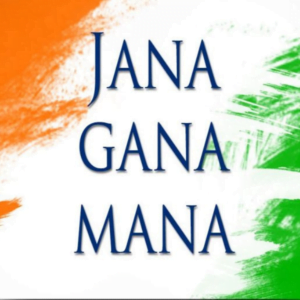
Jana Gana Mana
Jana Gana Mana by Rabindranath Tagore was officially adopted by the Constituent Assembly as the Indian national anthem on 24 January 1950.

| Devanagari script | Official Romanisation |
|---|---|
| जनगणमन अधिनायक जय हे, भारत भाग्य विधाता। पंजाब सिंध गुजरात मराठा, द्राविड़ उत्कल बंग। विंध्य हिमाचल यमुना गंगा, उच्छल जलधि तरंग। तव शुभ नामे जागे, तव शुभ आशिष मागे गाहे तव जय गाथा। जनगणमंगलदायक जय हे, भारत भाग्य विधाता। जय हे, जय हे, जय हे, जय जय जय जय हे! | Jana gana mana adhinayaka jaya he Bharata bhagya vidhata Panjaba Sindh Gujarata Maratha Dravida Utkala Banga Vindhya Himachala Yamuna Ganga uchchala jaladhi taranga Tava Subha name jage, tava subha asisa mage, gahe tava jaya gatha. Jana gana mangala dayaka jaya he Bharata bhagya vidhata. Jaya he, Jaya he, Jaya he, Jaya Jaya Jaya Jaya he. |
National Song of India – Vande Mataram
Vande Mataram is our national song written by Bankim Chandra Chatterjee in the 1870s. this song is a source of motivation for every freedom fighters in the time of independence.
‘Vande Mataram’ originally was India’s national anthem, But ‘Jana Gana Mana’ was adopted as a national anthem after independence. That was written by Chandra Chatterjee Bankim.
The English translation of these songs made by Sri Aurobindo, and in Urdu translated by Aarif Mohammad Khan.
These songs’ first two stanzas are in Sanskrit, and remaining are in Bangla. It got the status of the National song of India on 24 January 1950 by the Indian Constitution.
| Devnagari script | Official Romanisation |
|---|---|
| वन्दे मातरम्। सुजलाम् सुफलाम् मलयज शीतलाम् सस्यश्यामलाम् मातरम्। वन्दे मातरम्। शुभ्रज्योत्स्नाम् पुलकितयामिनीम् फुल्लकुसुमित द्रुमदलशोभिनीम् सुहासिनीम् सुमधुर भाषिणीम् सुखदाम् वरदाम् मातरम्।। वन्दे मातरम्। वन्दे मातरम्। | Vande Mataram! Sujalam,suphalam, malayaja shitalam, Shasyashyamalam, Mataram! Vande Mataram! Shubhrajyotsna pulakitayaminim, Phullakusumita drumadala shobhinim, Suhasinim sumadhura bhashinim, Sukhadam varadam, Mataram! Vande Mataram, Vande Mataram! |
National symbols of India (Tabular)
| Title | Symbol | Image | Notes |
|---|---|---|---|
| National flag | Flag of India |   | A horizontal rectangular tricolour with equally sized deep saffron at the top, white in the middle and India green at the bottom. In the centre is a navy blue wheel with twenty-four spokes, known as the Ashoka Chakra. The flag is based on the Swaraj flag designed by Pingali Venkayya. |
| National emblem | National Emblem of India | ||
| National calendar | Saka calendar | – | Saka calendar was introduced by the Calendar Committee in 1957. Usage officially started at 1 Chaitra 1879 Saka Era, or 22 March 1957. |
| National anthem | Jana Gana Mana | – | Jana Gana Mana by Rabindranath Tagore was officially adopted by the Constituent Assembly as the Indian national anthem on 24 January 1950. |
| National song | Vande Mataram | – | The first two verses of Vande Mataram by Bankim Chandra Chatterjee was adopted as the National Song of India in 1950. “Vande Mataram” was sung during the 1896 session of the Indian National Congress by Rabindranath Tagore. |
| Oath of allegiance | National Pledge | – | It was written in Telugu by Pydimarri Venkata Subba Rao in 1962. Central Advisory Board of Education directed that the pledge be sung in Schools and that this practice to be introduced by 26 January 1965. |
| National flower | Indian lotus | 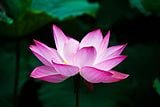  | Lotus (Nelumbo nucifera) is a sacred flower and occupies a unique position in the art and mythology of ancient India and has been an auspicious symbol of Indian culture. |
| National fruit | Mango |  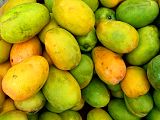 | Mango (Mangifera indica) originated in India and the country is home to more than 100 varieties of the fruit. |
| National river | Ganga |  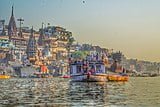 | Ganga is the longest river of India with the most heavily populated river basin in the world. The river is revered by Hindus as the most sacred river on earth. |
| National tree | Indian banyan |   | Indian Banyan (Ficus bengalensis) root themselves to form new trees and grow over large areas. Because of this characteristic and its longevity, this tree is considered immortal and is an integral part of the myths and legends of India. |
| National animal | Royal Bengal tiger |  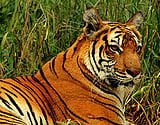 | Bengal tiger (Panthera tigris Tigris), the largest carnivore is found only in the Indian subcontinent and can be found in most regions of the country. |
| National aquatic animal | River dolphin |   | Gangetic dolphin (Platanista gangetica) is said to represent the purity of the holy Ganga River as it can only survive in pure and fresh water. |
| National bird | Indian peacock | 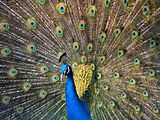  | Indian peacock (Pavo cristatus) is designated as the national bird of India. A bird indigenous to the subcontinent, peacock represents the unity of vivid colours and finds references in Indian culture. On February 1, 1963, The Government of India have decided to have the Peacock as the national bird of India. The decision has been taken after considering the views of the State Governments and the opinions expressed in the Press. |
| National currency | Indian Rupee |   | Indian Rupee (ISO code: INR) is the official currency of the Republic of India. The issuance of the currency is controlled by the Reserve Bank of India. The Indian rupee symbol is derived from the Devanagari consonant “र” (ra) and the Latin letter “R” was adopted in 2010. |
| National Microbe | Lactobacillus delbrueckii subsp. bulgaricus |  | Lactobacillus delbrueckii (subsp. bulgaricus) has been announced as the National Microbe for India by Jayanthi Natarajan, India’s Minister of State for Environment and Forests on October 18, 2012 during the International Conference on ‘Biodiversity Conservation and Education for Sustainable Development – Learning to Conserve Biodiversity in a Rapidly Changing World’ held at Hyderabad during CoP-11. The microbe was selected by children who had visited the Science Express Biodiversity Special, a train which has been visiting various stations across the country. |
| National Game | Hockey |   | The Republic of India doesn’t signify any game as its National Game but Hockey is considered as the unofficial National Game of the country |
| National Vegetables | Brinjal | – | |
| National Reptile Of India | King Kobra |  | With its length up to 18.5 to 18.8 ft (5.6 to 5.7 m), King Cobra is the national reptile of India. This venomous snake is found in forests in India through Southeast Asia. It preys on other snakes, lizards and rodents. It has its cultural significance as Hindus worship this reptile. |
| National Heritage Animal Of India | Elephant | 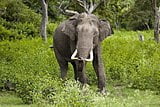 | The national heritage animals of India is Elephant. The Indian elephant is a subspecies of the Asian elephant and found in the mainland Asia. It is listed as one of the endangered animals by IUCN. It can be spotted at four different regions in the country. |
National Animal of India – Bengal Tiger
The Royal Bengal Tiger is an Indian national animal. Bengal tiger is a sign of strength, agility, and power. The tiger is called the Lord of the jungle and reveals India’s rich wildlife. The average lifespan of a tiger is between 8 and 10 years in the wild. In Hindi, people called him “बाघ”.
The Bengal Tiger was declared a national animal in India in April 1973, when the Tiger Project was launch to protect tigers in India. Before that, The lion has been India’s national animal.
| Common Name | Royal Bengal Tiger |
| Scientific Name | Panthera tigris tigris |
| Declared National animal in | April 1973 |
| Found in | India, Sri Lanka, Nepal, Myanmar, Bangladesh |
| Average weight | Male – 220 Kg & Female – 140 Kg |
| Average Length | Male – Upto 3 meter & Female – Upto 2.6 meter |
| Average Lifespan | 8 to 10 years in wild |
| Average Speed | 60 km/h |
National Bird of India – Indian Peafoul
The Indian National Bird is the Indian Peafowl, also called as the Peacock.
The peacock was declared a National Indian Bird in 1963.
Peacock, the symbol of grace, joy, beauty, love and its presence all over the country.
| Common Name | Indian Peafoul, blue peafowl |
| Scientific Name | Pavo cristatus |
| Designated national bird in | 1963 |
| Found in | April to May – southern India June – northern India January to March – Sri Lanka |
| Habitat | Grasslands, moist and dry deciduous forests, cultivated regions near human habitats, Usually located where water is available. |
| Eating Habits | Omnivorous |
| Average weight | Male – 5 Kg & Female – 3.5 Kg |
| Average Length | Male – Upto 1.95 – 2.25 m & Female – Upto 0.95 m |
| Average Lifespan | 15 to 20 years in wild |
| Average Speed | 13 km/h |
National Heritage Animal of India – Elephant
The elephant is the national heritage animal of India. The Indian elephant is an Asian elephant subspecies discovered in mainland Asia. Indian elephants are reported to be endangered animals by IUCN Red List.
National Calendar of India – Saka calendar
In 1957 the Sak Calendar was started by the Calendar Committee, and it is based on the Saka era. Officially usage of this calendar started on 22 March 1957. This calendar follows the signs of the tropical zodiac.
| Chaitra | चैत्र |
| Vaisakha | वैशाख |
| Jyaistha | ज्येष्ठ / जेठ |
| Asadha | आषाढ़ |
| Sravana | श्रावण / सावन |
| Bhadra | भाद्रपद / भादों |
| Asvina | अश्विन / क्वार |
| Kartika | कार्तिक |
| Agrahayana | अग्रहायण / अगहन |
| Pausa | पौष |
| Magha | माघ |
| Phalguna | फाल्गुन |
National Currency of India – Indian Rupee
In 2010, the new rupee symbol (₹) was officially adopted, and the first series started in circulation on 8 July 2011. D. Uday Kumar designs this new rupee coin. To design it, he has referred to the Devanagari consonant ‘र’ and the Latin capital letter ‘R’. Before 2010, India used ‘₨’ and ‘Re’ as symbols of the rupee. The Indian Rupee is regulated (controlled) by the Reserve Bank of India.
| Sign | ₹ |
| Currency Code | INR |
| Coins Available | ₹1, ₹2, ₹5, ₹10 |
| Notes Available | ₹5, ₹10, ₹20, ₹50, ₹100, ₹200, ₹500, ₹2,000 |
| Central Bank | Reserve Bank of India |

